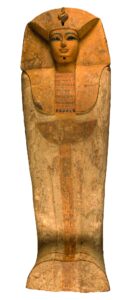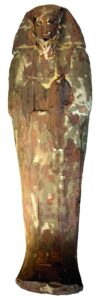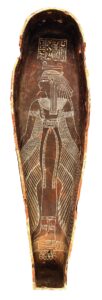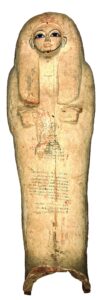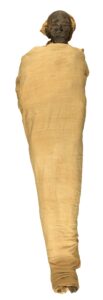Thutmose I (Aakheperkare)
Son of Seniseb — father unknown
New Kingdom, 18th Dynasty

Although he was not a member of the Ahmosid family, Thutmose I became king after Amenhotep I died without an heir. Probably one of the previous monarch’s generals, he came to the throne around the age of 40 and is thought to have ruled for a little over ten years. His principal wife was Ahmose, whose name suggests that she was a blood relative of the previous line. Thutmose I and Ahmose were the parents of the future king Hatshepsut. With a non-royal wife, Mutnefret, he fathered his successor, Thutmose II; he also had other sons whose mothers are unidentified.
Remembered as a warrior pharaoh, the king’s accomplishments included substantial campaigns into Syria and the expansion of Egyptian rule in the south to the Fourth Cataract of the Nile. His military campaigns, which were recorded in the tombs of several of his officials, opened new opportunities for trade, diplomacy, and economic exploitation with Egypt’s neighbors.
Thutmose I was also known for his deliberate efforts to associate his reign with the glories of his predecessors, likely in large part to validate his own rule. He carried out an extensive construction program, building at sites as varied as Abydos, Memphis, Armant, el-Hiba, Elephantine, and Edfu. In Thebes, he is credited with adding pylons to the Karnak temple complex and completing an ambulatory begun by Amenhotep I.
Thutmose I’s architect, Ineni, recorded in his own tomb that he had constructed a secret burial place for his king (“none seeing and none hearing”); this tomb has never been identified. It is likely that it was disturbed by robbers, and at some point, his daughter Hatshepsut moved her father’s burial to her own tomb, KV 20.




